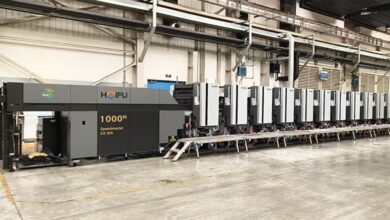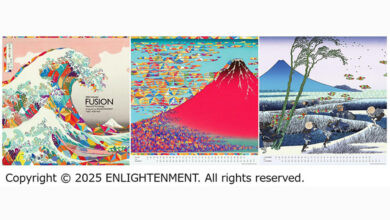Sun Chemical Releases Annual Sustainability Report

Sun Chemical released the latest edition of its Corporate Sustainability Report, which focuses on the organisation’s commitment to a robust sustainability strategy comprised of three key pillars: operations, products and services, and collaborations.
As part of its sustainability strategy, Sun Chemical organised a Corporate Sustainability Committee in August 2020 comprised of eight executive leaders, designed to guarantee company-wide engagement in sustainability initiatives and oversee the sustainability strategy. Under this committee, Sun Chemical has built a sustainable framework to guide future roadmaps in each of the strategy’s three pillars, which are referred to as the ‘five Rs’: Reuse, Reduce, Renew, Recycle and Redesign.
This framework supports a circular economy and reductions in carbon footprint, which can be applied from either an operational or product-oriented point of view. Each of these steps has enabled the company to align its sustainability goals with the United Nations’ Sustainable Development Goals (SDGs).
The latest report shows that Sun Chemical achieved its recent energy and water usage goals and outlines ambitious new initiatives that align with the three key pillars strategy and ‘five Rs’ approach. Below is a list of some of these initiatives:
Operations
- a long-term strategic target to reduce CO2 levels by at least 50 percent by 2030, building on the company’s previous target of 30 percent
- the reduction of water usage by 6 percent compared to 2019
- the reduction of overall waste sent to landfills by 5 percent compared to 2019
Products and Services
- developing products that decrease overall packaging weight or waste, such as the water-based SunVisto® AquaSafe and sheetfed SunPak® DirectFood Plus direct-food-contact inks that enable packaging lightweighting by allowing for removal of protective film layers
- manufacturing products with market-leading levels of biorenewable content, like the SunVisto® AquaGreen platform of high-biorenewable-content water-based inks and coatings
- formulating solutions that enhance recyclability, such as SunSpectro® SolvaWash GR and FL washable/deinkable gravure and flexo-printable solvent-based inks that allow higher quality and yield of recycled PET from bottle recycling streams
- developing solutions that fundamentally redesign inks that can lead to increased recyclability, such as the SunBar® Aerobloc printable barrier coating to achieve an excellent oxygen barrier with high lamination bond strengths to enable the next generation of recycle-friendly flexible packaging
Collaborations
- developing state-of-the-art proof-of-concepts for collaborative industry projects that contribute to the enhancement of packaging sustainability and recycling, including monomaterial MDO-PE barrier flexible packaging with Elif
- an EcoVadis sustainability score of 53/100, a bronze rating that puts Sun Chemical in the 69th percentile compared to similar businesses
- bronze-level material health ratings from the Cradle to Cradle Products Innovation Institute for SunLit® Diamond sheetfed offset process printing inks and SunFashion™ BE Heatset Series mineral oil, varnish and flush-based process ink series
“By focusing on the three pillars of our sustainability strategy, Sun Chemical remains committed to following sustainable practices and materials throughout the product lifecycle,” said Gary Andrzejewski, Corporate Vice President, Environmental Affairs, Sun Chemical. “Consumers want brands to not only provide high-quality products made with minimal waste and bio-renewable content, but to utilise sustainable best practices during all stages of production, from manufacturing to distribution. Sun Chemical’s strategic sustainability framework allows us to ensure the sustainability of end products by increasing bio-renewable content, improving recyclability rates and reducing waste.”
“The sustainability report shows Sun Chemical’s commitment to our sustainability goals, but we’re continuing to find new ways to improve,” said Michael Simoni, Global Product Stewardship Leader, Sun Chemical. “By guiding future product development based on reuse, reduce, renew, recycle and redesign, Sun Chemical is able to develop the next generation of industry-leading, high-quality products that further increase the use of bio-renewable and recyclable materials for our customers.”






94 Comments